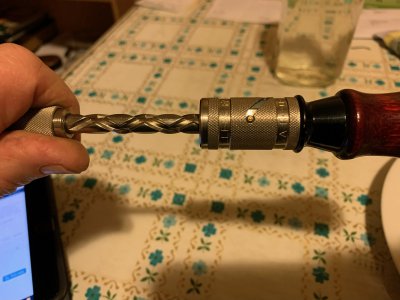- Joined
- Sep 5, 2013
- Messages
- 3,207
I’m sitting here twiddling one of my old Millers Falls screwdrivers…. If I hold the usual “blade” end of the driver solid in my hand, the barrel which is attached to handle needs to follow that helical groove in the shaft as I turn it. If I were to fix a tube of metal to the front of that barrel part and turned it, it too would follow the proscribed helix.Thought about doing it by eye, but the taper needs to be smooth. No dips or flat spots.
Could you use this to advantage and somehow fix your part to be cut to the barrel of the screwdriver so that now your part travels the desired helix? If the blade end of the driver is secured in the stationary lathe chuck with the handle supported at the tailstock, would you be able to rotate the barrel/part past the pencil grinder in your tool post in a smooth and controlled enough manner to cut your groove? Just spit balling…
-frank


